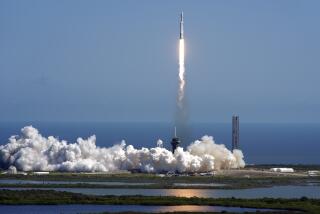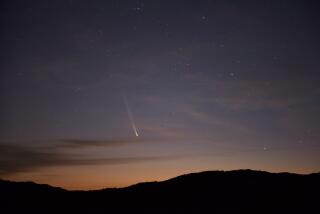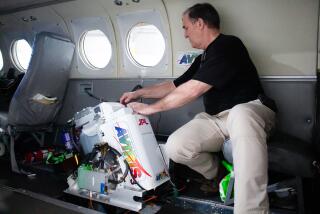NASA carbon observatory finally reaches space: Let the CO2 hunt begin!
In the wee hours of Wednesday morning, NASA’s brand new Orbiting Carbon Observatory-2 successfully reached its final destination: space.
It still has three weeks of maneuvers to do before it reaches its ultimate orbit 438 miles above the Earth. But by the end of the month it should be fully launched on its scientific mission: taking more than 100,000 precise measurements of carbon dioxide in the Earth’s atmosphere every day.
The goal is to help researchers understand where on our planet carbon dioxide is being produced and where it is being absorbed by forests, oceans and soil.
“Scientists currently don’t know where and how Earth’s oceans and plants have absorbed more than half the carbon dioxide that human activities have emitted into our atmosphere since the beginning of the industrial era,” said David Crisp, OCO-2 science team leader at NASA’s Jet Propulsion Laboratory, in a statement. “For society to better manage carbon dioxide levels in our atmosphere, we need to be able to measure the natural source and sink processes.”
A previously scheduled launch of the OCO-2 was scrubbed on Tuesday, just 46 seconds before liftoff, because of a failure of the water supression system on the liftoff pad.
But by Wednesday morning, the problem had been fixed, and the satellite blasted off from Vandenberg Air Force Base in California aboard a United Launch Delta II rocket at 2:56 a.m. PDT.
The next phases of the satellites entry to space were narrated by the OCO-2 social media team on the satellite’s exclamation point-filled Twitter feed, @IamOCO2.
“We have stage I-II separation. Holding my breath for the next step...”
“YES! We have Fairing Separation and I am free! Space here I come!”
“Solar array deployment is a success!”
“I’ve phoned home. Ground controllers hear me loud and clear!”
“I’m alive! Congratulations to the entire OCO-2 team!”
The success of this launch seems especially sweet, because five years ago an earlier version of the OCO satellite was destroyed after it failed to separate from its launch rocket and burned up in reentry. The cost of that failed mission was $209 million, according to a mishap investigation.
It will still be a little while before scientists get their hands on any data collected by OCO-2. NASA said it expects to release the first initial estimate of atmospheric carbon dioxide concentrations in early 2015.
Learn about our natural world and the people who study it. Follow me @DeborahNetburn







